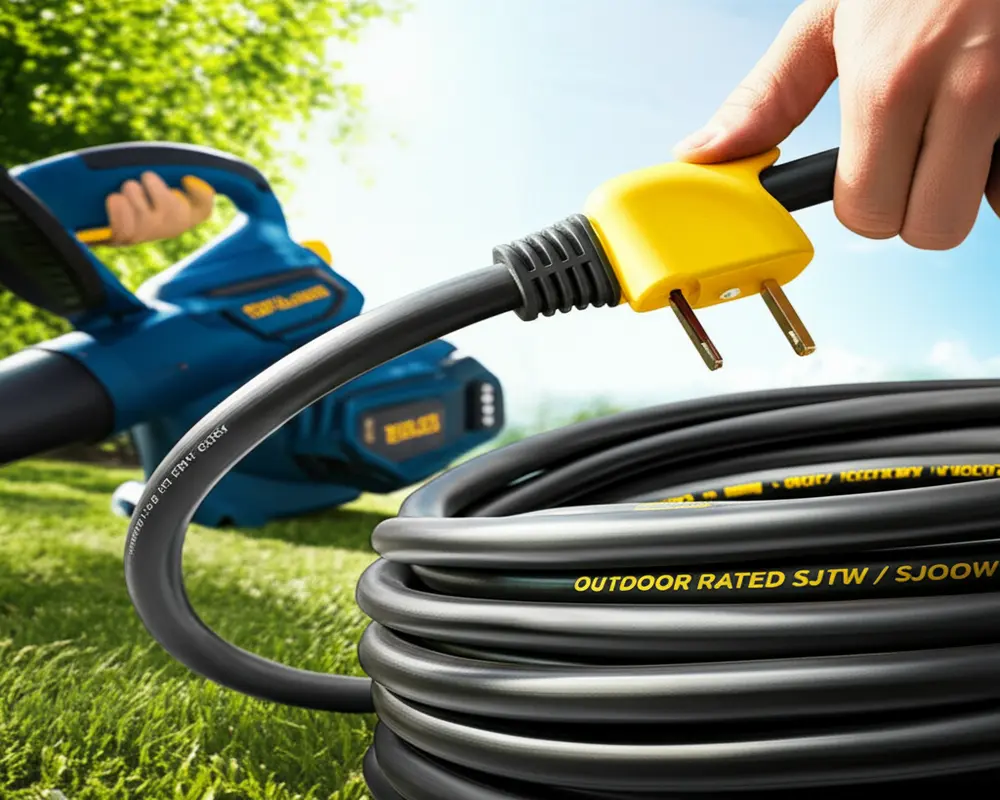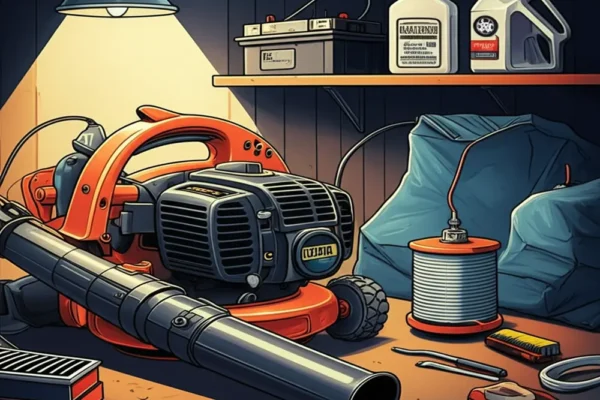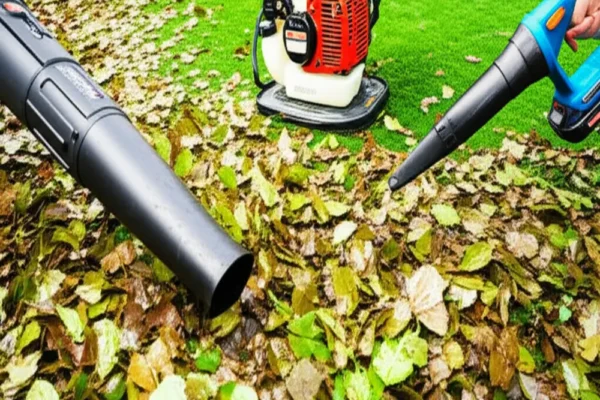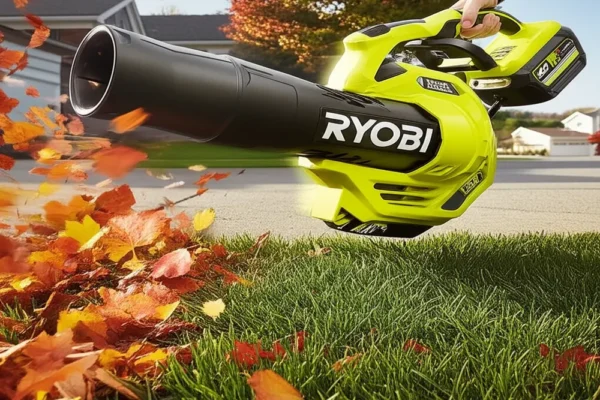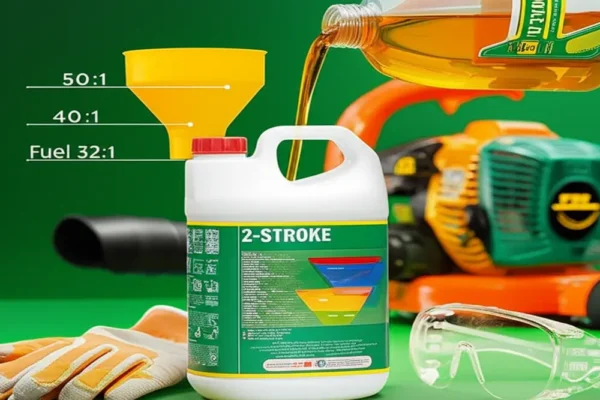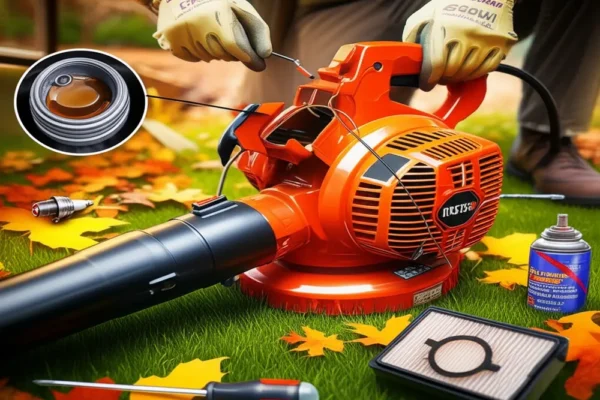Electric Leaf Blower Cord: Selection, Safety & Troubleshooting Guide
Your electric leaf blower cord is more than just a power supply; it’s a vital component that influences your tool’s performance, safety, and longevity. Understanding how to select the right cord, maintain its safety, and troubleshoot common issues is essential for every homeowner and gardening enthusiast. This comprehensive guide walks you through everything you need to know about electric leaf blower cords, empowering you to work safely and efficiently in your yard.
I. Introduction: Powering Your Yard Work Safely and Effectively
Contents
- 1 I. Introduction: Powering Your Yard Work Safely and Effectively
- 2 II. Understanding Your Electric Leaf Blower’s Power Needs
- 3 III. Choosing the Right Extension Cord
- 4 IV. Electric Leaf Blower Cord Safety
- 5 V. Troubleshooting Common Cord Issues
- 6 VI. Repairing vs. Replacing Your Cord
- 7 VII. Recommended Outdoor Extension Cords for Electric Leaf Blowers
- 8 VIII. Frequently Asked Questions
- 8.1 Can any extension cord be used with an electric leaf blower?
- 8.2 What gauge of extension cord is needed for a 12-amp leaf blower?
- 8.3 What is the maximum safe length for an extension cord?
- 8.4 Is cord heating normal during use?
- 8.5 Are cords universally replaceable?
- 8.6 What do SJTW and SJOOW ratings mean?
- 9 IX. Conclusion: Power Your Yard with Confidence
The electric leaf blower cord plays a crucial role in the operation and safety of your equipment. Using an improper cord can lead to reduced blower performance, overheating, or even electrical hazards. That’s why this guide exists—to clear up confusion about cord types, sizes, and common problems that users face.
By the end, you will have a solid grasp of how to select the correct extension cord gauge, follow essential safety precautions, troubleshoot issues, and know when to repair or replace your cord. This knowledge is key to ensuring your leaf blower runs at peak performance while avoiding unnecessary risks.
II. Understanding Your Electric Leaf Blower’s Power Needs
A. Electrical Basics: Amps, Volts, and Watts Explained
To select the right cord, you must understand the electrical requirements of your leaf blower. The power your tool consumes is measured in watts (W), which is the product of voltage (V) and current (amperage, A). Most electric leaf blowers operate at standard household voltage (120 volts in the U.S.), but their amperage varies based on motor power.
You can find your blower’s amperage rating on its label or in the user manual. For example, a typical electric leaf blower might draw 10 to 12 amps. This figure is essential because it determines the minimum wire gauge your extension cord must have to safely carry the current.
B. Built-in Cord Characteristics
Many electric leaf blowers come with a built-in cord designed to handle their specific power needs and outdoor use. These cords are typically insulated with durable jackets and have grounding features. Despite their quality, regular inspection for wear, cuts, or damage is necessary to prevent electrical hazards and ensure continuous performance.
III. Choosing the Right Extension Cord
A. Wire Gauge Importance
The wire gauge of an extension cord, denoted by the American Wire Gauge (AWG) system, defines the thickness of the wire inside the cord. The lower the gauge number, the thicker the wire, and the more current it can safely carry with minimal voltage drop. A thin wire carrying high current over a long distance causes the voltage to drop, leading to insufficient power delivery and potential damage to your leaf blower.
B. Extension Cord Sizing Chart
Use the following table as a reference for selecting the proper extension cord gauge based on your leaf blower’s amperage and the cord length:
| Amperage | Cord Length (Up to 50 ft / 15 m) | Cord Length (Up to 100 ft / 30 m) | Cord Length (Up to 150 ft / 45 m) |
|---|---|---|---|
| 0-6 Amps | 16 AWG | 14 AWG | 12 AWG |
| 6-10 Amps | 14 AWG | 12 AWG | 10 AWG |
| 10-12 Amps | 12 AWG | 10 AWG | 10 AWG |
Choosing a cord with an appropriate gauge is vital to prevent voltage drop and overheating. For example, a 12-amp blower should use at least a 12 AWG cord for lengths up to 50 feet, but a thicker 10 AWG cord is recommended for longer runs.
C. Outdoor-Rated Cords
Not all extension cords are suitable for outdoor use. Outdoor-rated cords have specific ratings such as SJTW or SJOOW, indicating they are weather-resistant, durable, and safe for garden environments. Indoor cords lack these protective features and can degrade quickly when exposed to moisture, UV light, or rough surfaces, posing safety hazards.
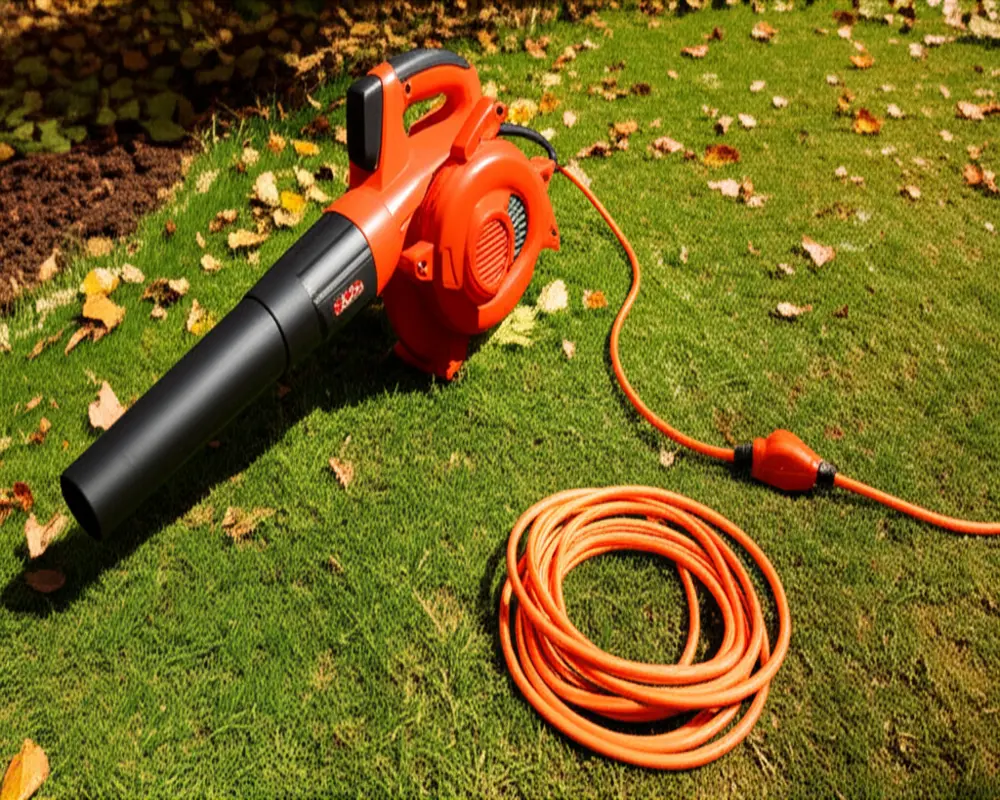
D. Plug and Receptacle Types
For safety, always use cords with grounded 3-prong plugs and receptacles. The grounding prong helps prevent electrical shocks by providing a path for stray electricity. Avoid using 2-prong cords for your electric leaf blower, as they lack this essential safety feature.
IV. Electric Leaf Blower Cord Safety
A. Pre-use Inspection Checklist
Before each use, inspect your electric leaf blower cord thoroughly. Look for any signs of damage such as cuts, frays, exposed wires, or bent prongs. Damaged cords should never be used as they pose a serious risk of electric shock or fire.
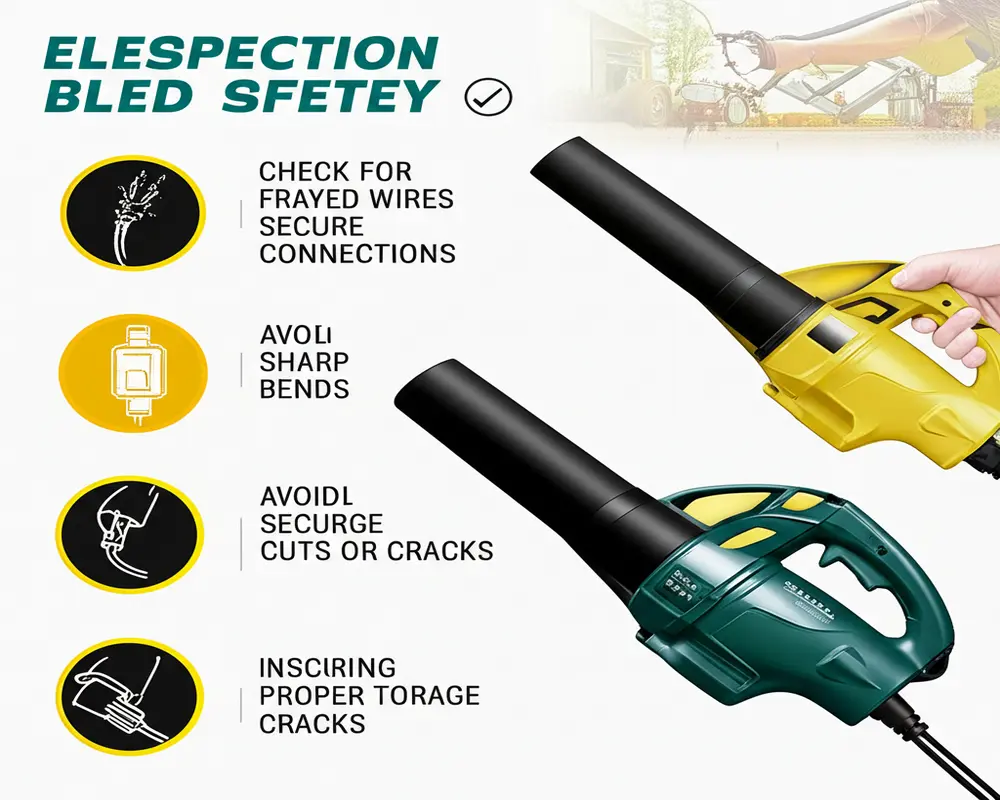
B. Ground Fault Circuit Interrupters (GFCIs)
Using a GFCI outlet or plug is mandatory when operating outdoor electric tools like leaf blowers. GFCIs detect ground faults and quickly cut power to prevent electrocution. If your outdoor power source lacks a GFCI, consider using a portable GFCI adapter for added safety.
C. Safe Operating Practices
To avoid accidents, keep your cord clear of sharp objects, hot surfaces, and areas with heavy foot traffic to prevent tripping and damage. Never overload the cord by plugging in multiple high-power devices. Always keep children and pets away from operating equipment and cords.
D. Proper Storage
Coil your extension cord loosely and store it in a dry, cool place when not in use. Avoid tight knots or kinks that can damage the internal wiring. Proper storage extends the life of your cord and maintains safety standards.
V. Troubleshooting Common Cord Issues
A. Diagnosing Blower Not Starting
If your electric leaf blower fails to start, begin by testing the outlet with another device to ensure power availability. Check if the GFCI has tripped and reset it if necessary. Inspect the cord and plug for visible damage or loose connections as these are common culprits.
B. Overheating Cords
Overheating cords often result from using an undersized cord for your blower’s amperage or a damaged cord. If you notice the cord becoming hot to the touch, immediately unplug it and switch to a properly rated cord. Continuing to use an overheating cord can lead to fire hazards.
VI. Repairing vs. Replacing Your Cord
A. When Repair is Viable
Minor issues like superficial cuts in the cord jacket or loose prongs may be repaired safely with electrical tape or by tightening connections. However, these repairs should be temporary and performed only if you have proper knowledge and tools.
B. When to Replace
Replace your cord if you find exposed wires, deep cuts, internal damage, or if the cord has repeatedly overheated. These conditions compromise electrical integrity and cannot be reliably repaired.
C. DIY Replacement Guidelines
If you choose to replace your cord yourself, use the exact gauge and rating as recommended by your leaf blower manufacturer. Use insulated tools, ensure all connections are secure and grounded, and test the cord thoroughly before regular use. When in doubt, consult a professional electrician.
VII. Recommended Outdoor Extension Cords for Electric Leaf Blowers
A. Essential Features
Look for cords that match these criteria for optimal performance and safety:
- Correct gauge for your blower’s amperage and cord length
- Outdoor-rated insulation with SJTW or SJOOW markings
- Weather and UV resistance
- Grounded 3-prong plugs and connectors
- Flexible and durable jacket material for ease of handling
B. Top Picks for 2025
Here are some highly rated extension cords that fit these requirements:
- Iron Forge Cable 12 AWG Outdoor Extension Cord: Durable, weather-resistant, and flexible for up to 100 ft runs.
- US Wire and Cable 14 AWG SJTW Extension Cord: Affordable, lightweight, suitable for shorter runs and lighter amperage.
- Southwire 12/3 SJTW Outdoor Extension Cord: Heavy-duty with a tough jacket, ideal for high-powered leaf blowers and longer distances.
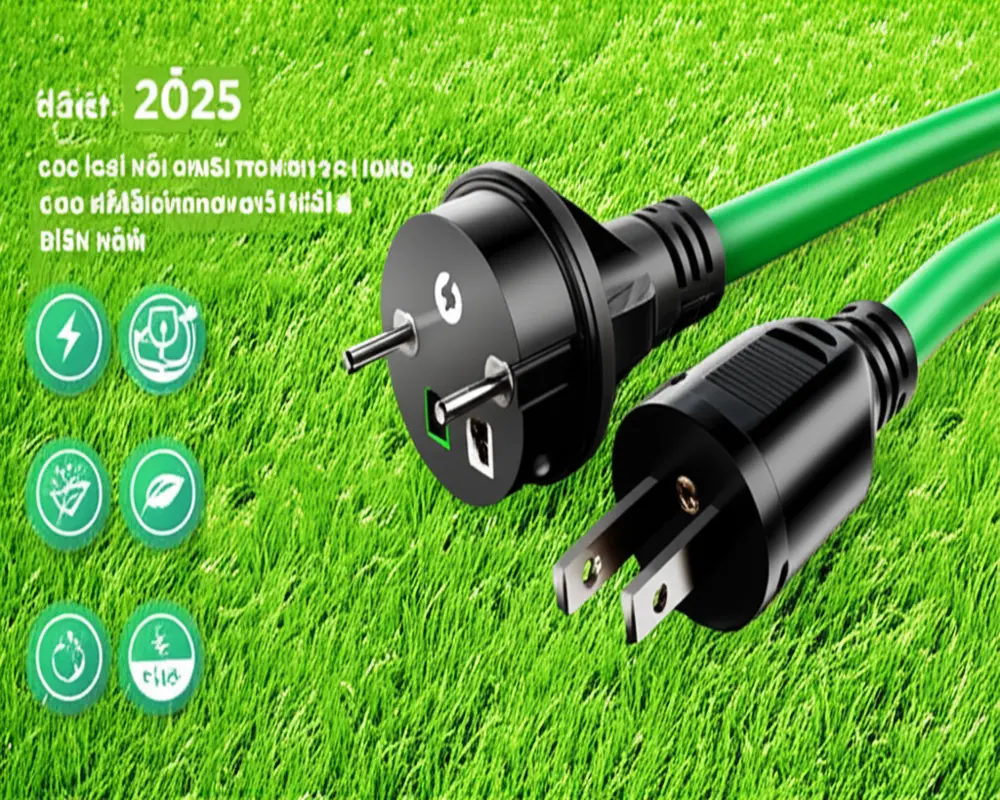
C. Where to Buy
You can find these extension cords at trusted retailers such as Home Depot, Lowe’s, and Amazon. Always verify product specifications and customer reviews before purchasing.
VIII. Frequently Asked Questions
Can any extension cord be used with an electric leaf blower?
No. It’s critical to use an extension cord with the correct gauge, outdoor rating, and grounding to ensure safety and performance.
What gauge of extension cord is needed for a 12-amp leaf blower?
For a 12-amp blower, a minimum of 12 AWG cord is recommended for lengths up to 50 feet. For longer cords, 10 AWG is safer to prevent voltage drop.
What is the maximum safe length for an extension cord?
Generally, cords longer than 100 feet can cause significant voltage drop. Use thicker gauge cords for longer distances or relocate your power source closer.
Is cord heating normal during use?
Some warmth may be normal, but excessive heating indicates an undersized cord or a damaged cord, which requires immediate attention.
Are cords universally replaceable?
Cords should be replaced with ones matching the original specifications, including gauge, length, rating, and plug type to maintain safety and compatibility.
What do SJTW and SJOOW ratings mean?
SJTW cords are junior service cords with thermoplastic jackets rated for outdoor use, while SJOOW cords are junior service oil-resistant with weather-resistant rubber jackets, suitable for harsher conditions.
IX. Conclusion: Power Your Yard with Confidence
Choosing and maintaining the right electric leaf blower cord is essential for safe, effective yard work. Always match the cord gauge to your blower’s amperage and length requirements, use outdoor-rated cords with grounding, and inspect regularly for damage.
Adhering to safety practices like using GFCIs and proper storage extends your cord’s life and protects you from electrical hazards. When troubleshooting, prioritize cord and outlet inspection before assuming tool failure. For complex repairs or replacement, professional consultation is advisable.
With these insights, you can power your leaf blower safely and confidently, ensuring your garden stays clean and your equipment runs smoothly.
For further guidance on garden tools and maintenance, explore our detailed articles such as the Hand Cultivator Buying Guide and Best Pruning Shears Reviews.
For authoritative safety information, visit the Electrical Safety Foundation International (ESFI) and the Consumer Product Safety Commission.

